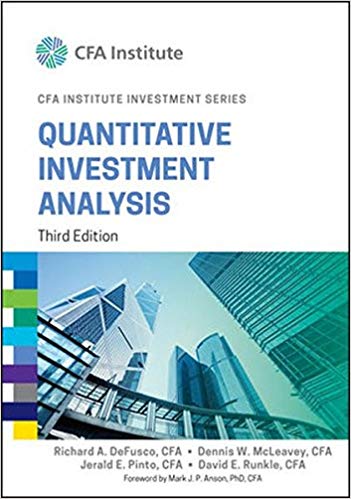Gary Hansen is a securities analyst for a mutual fund specializing in small-capitalization growth stocks. The fund
Question:
Underwriter rank = 1-10, where 10 is highest rank
Pre-offer price adjustment a = (Offer price - Initial filing price)/Initial filing price
Offer size ($ millions) = Shares sold × Offer price
Fraction retained a = Fraction of total company shares retained by insiders a Expressed as a decimal.
Hansen collects a sample of 1,725 recent IPOs for his regression model. Regression results appear in Exhibit 1, and ANOVA results appear in Exhibit 2
Hansen wants to use the regression results to predict the initial return for an upcoming IPO. The upcoming IPO has the following characteristics:
€¢ Underwriter rank = 6;
€¢ Pre-offer price adjustment = 0.04;
-1.png)
-2.png)
-3.png)
-4.png)
€¢ Offer size = $40 million;
€¢ Fraction retained = 0.70.
Because he notes that the pre-offer price adjustment appears to have an important effect on initial return, Hansen wants to construct a 95 percent confidence interval for the coefficient on this variable. He also believes that for each 1 percent increase in pre-offer price adjustment, the initial return will increase by less than 0.5 percent, holding other variables constant.
Hansen wishes to test this hypothesis at the 0.05 level of significance.
Before applying his model, Hansen asks a colleague, Phil Chang, to review its specification and results. After examining the model, Chang concludes that the model suffers from two problems: 1) conditional heteroskedasticity, and 2) omitted variable bias. Chang makes the following statements:
Statement 1 "Conditional heteroskedasticity will result in consistent coefficient estimates, but both the t-statistics and F-statistic will be biased, resulting in false inferences."
Statement 2 "If an omitted variable is correlated with variables already included in the model, coefficient estimates will be biased and inconsistent and standard errors will also be inconsistent."
Selected values for the t-distribution and F-distribution appear in Exhibits 3 and 4, respectively.
The most appropriate interpretation of the multiple R-squared for Hansen's model is that:
A. unexplained variation in the dependent variable is 36 percent of total variation.
B. correlation between predicted and actual values of the dependent variable is 0.36.
C. correlation between predicted and actual values of the dependent variable is 0.60.
Step by Step Answer:

Quantitative Investment Analysis
ISBN: 978-1119104223
3rd edition
Authors: Richard A. DeFusco, Dennis W. McLeavey, Jerald E. Pinto, David E. Runkle





